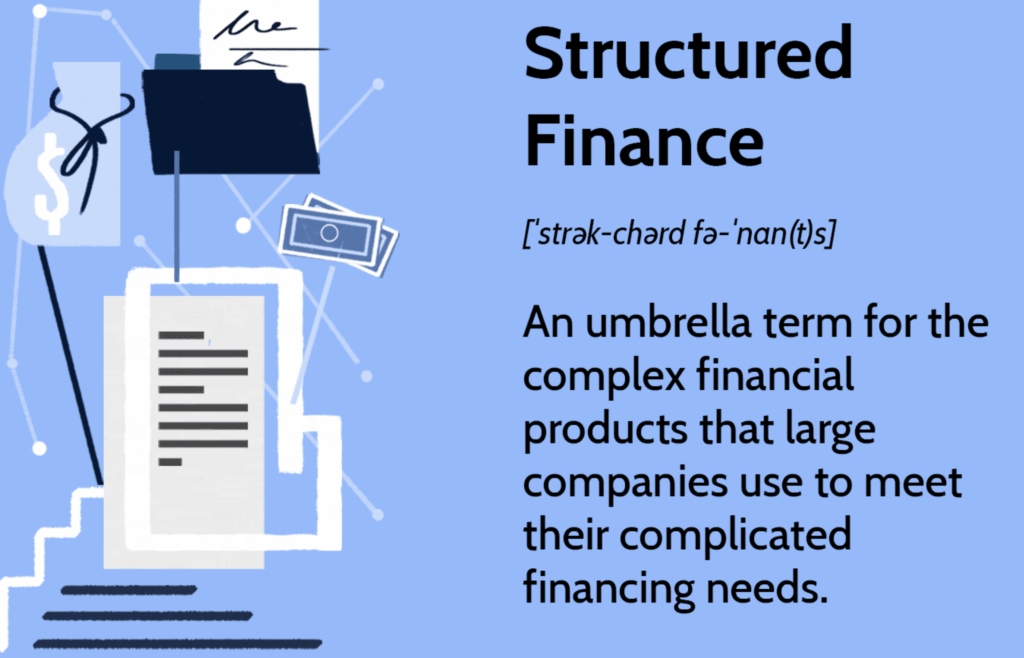A structured trade, in finance, is a complex transaction that involves a combination of financial instruments, such as options, swaps, and futures contracts, and can be customized to meet the specific needs of individual investors. These trades are often used by large financial institutions and sophisticated investors to manage risk, generate returns, and gain exposure to specific markets or assets.
Structured trades are designed to meet the unique requirements of individual investors by combining different financial instruments to create a customized investment vehicle. For example, a structured trade might combine a bond with an option to provide a guaranteed return while also allowing the investor to participate in the potential upside of a particular asset or market.
While structured trades can be highly customized and provide unique investment opportunities, they can also be complex and carry a higher level of risk. Investors need to have a deep understanding of the underlying financial instruments and the markets in which they are investing to make informed decisions about structured trades.
In this blog article, we will explore the world of structured trades, their benefits and risks, and how they are used in the financial markets. We will also examine some common structured trade strategies and provide insights into how investors can assess whether a structured trade is a good fit for their investment portfolio.

What is a Structured Trade?
A structured trade is a type of financial transaction that combines different financial instruments to create a customized investment product. These trades are typically designed to meet the specific needs of individual investors or institutions and can provide exposure to specific markets or assets, as well as risk management and return enhancement benefits.
A practical example of a structured trade in a trading desk would be a “collar” trade. This trade involves buying a stock and simultaneously purchasing a put option and selling a call option on the same stock. The put option provides downside protection, while the call option generates income and sets a cap on potential upside. The result is a customized investment product that provides both protection and income generation for the investor.
Another example of a structured trade is a “credit spread” trade, which involves simultaneously selling one option and buying another option on the same underlying asset. This trade allows investors to generate income by selling options, while also managing risk by buying options to protect against losses.
Structured trades can be complex and require specialized expertise in financial engineering and risk management. They are often used by institutional investors and hedge funds, but can also be utilized by individual investors seeking to tailor their investment portfolios to their specific needs and goals. However, investors should be aware that structured trades can also carry a higher level of risk and may not be suitable for all investors. It is important to work with a qualified financial professional when considering structured trades.
The Benefits and Risks of A Structured Trade in Finance
Structured trade in finance has benefits and risks that investors should consider before investing. One benefit of structured trades is that they are highly customizable, allowing investors to tailor their investments to their specific needs and goals. For example, an investor might use a structured trade to gain exposure to a specific asset or market while also managing risk through the use of options or other financial instruments.
Structured trades can also provide opportunities for enhanced returns or income generation, such as through the use of options or other derivatives. In addition, structured trades may be used to take advantage of market inefficiencies or mispricings that can arise in certain situations.
However, a structured trade in finance can also carry risks. They are often complex and require specialized expertise to understand and manage effectively. Investors must have a deep understanding of the underlying financial instruments and the markets in which they are investing to make informed decisions about structured trades.
In addition, structured trades can be illiquid and difficult to unwind, which can limit an investor’s ability to react to changing market conditions. They may also carry higher fees or transaction costs than other types of investments.imes of market uncertainty or downturns.
A Comparison of The Different Types of Trades
There are several different types of trades, each with its own characteristics and uses. In this table, we will compare the main types of trades, including structured trades, and highlight their key features:
| Type of Trade | Description | Benefits | Risks |
|---|---|---|---|
| Equities | Buying and selling shares of stock | Potential for capital gains, dividend income | Risk of price fluctuations, company-specific risk |
| Fixed Income | Buying and selling bonds, notes, or other fixed-income securities | Steady income stream, less volatility than equities | Interest rate risk, credit risk |
| Options | Contracts that give the holder the right, but not the obligation, to buy or sell an underlying asset at a specific price | Potential for high returns, flexible investment strategy | Limited lifespan, potential for loss |
| Futures | Contracts that obligate the holder to buy or sell an underlying asset at a specific price and date in the future | Potential for high returns, useful for hedging | Limited flexibility, potential for loss |
| Foreign Exchange | Buying and selling different currencies | Potential for capital gains, diversification | Currency fluctuations, geopolitical risk |
| Commodities | Trading physical goods, such as oil or gold | Diversification, potential for high returns | Volatility, market disruptions |
| Structured Trades | Combining different financial instruments to create a customized investment product | Customizable, potential for enhanced returns | Complex, requires specialized expertise, potential for higher fees |
A structured trade in finance is unique in that it is highly customizable, allowing investors to create tailored investment products that meet their specific needs and goals. They can provide opportunities for enhanced returns or income generation, while also managing risk through the use of options or other financial instruments. However, structured trades can be complex and require specialized expertise to manage effectively, and may carry higher fees or transaction costs than other types of investments.
Overall, each type of trade has its own benefits and risks, and investors must carefully consider their investment objectives and risk tolerance before making any investment decisions. Working with a qualified financial professional can help investors navigate the complexities of different types of trades and build a diversified portfolio that aligns with their goals and preferences.
Conclusion
In conclusion, structured trades can provide investors with a highly customized approach to investing that meets their specific needs and goals. By combining different financial instruments, investors can create tailored investment products that offer unique features such as principal protection, income generation, or enhanced returns.
One of the key benefits of structured trades is their ability to manage risk through the use of options or other financial instruments. This can help investors achieve their investment objectives while also protecting against downside risk. Additionally, structured trades can offer opportunities for enhanced returns or income generation that may not be available through other types of investments.
However, structured trades can be complex and require specialized expertise to manage effectively. They may also carry higher fees or transaction costs than other types of investments. Investors must carefully consider their investment objectives and risk tolerance before entering into a structured trade, and should work with a qualified financial professional to ensure that they fully understand the product and its risks.
In summary, structured trades offer a unique approach to investing that can be tailored to an investor’s specific needs and goals. While they may not be suitable for all investors, structured trades can provide a way to manage risk and achieve investment objectives in a customized way. As with any investment, it is important for investors to fully understand the risks and benefits before making any investment decisions.
n.b: this is not financial advice

